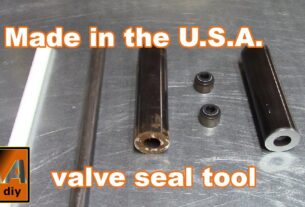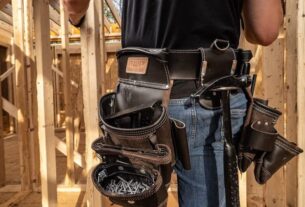Looking for a reliable and efficient tool shop air compressor can be overwhelming, especially if this is your first time purchasing one. With so many options available in the market, it can be challenging to determine which one will meet your specific needs.
In this comprehensive guide, we will cover everything you need to know about tool shop air compressors – from understanding their basic features to choosing the right size and power. We will also provide you with some tips on how to maintain your air compressor, so it lasts longer and performs better.
So, without further ado, let’s dive into the world of tool shop air compressors!
Understanding Tool Shop Air Compressors
Before we delve into the details, let’s start by understanding what a tool shop air compressor is and what it does.
In simple terms, an air compressor is a machine that converts power (usually from an electric motor or gasoline engine) into potential energy stored in compressed air. This compressed air can then be used to power various tools and machines.
A tool shop air compressor is specifically designed to be used in a workshop or garage setting. It comes equipped with various features that make it suitable for powering pneumatic tools such as nail guns, impact wrenches, sanders, and sprayers.
Types of Tool Shop Air Compressors
There are three main types of tool shop air compressors: piston-type compressors, rotary screw compressors, and centrifugal compressors.
Piston-Type Compressors
Piston-type compressors are the most common type of air compressor used in workshops and garages. They work by using pistons that move up and down inside cylinders to compress the air. These compressors come in both single-stage and two-stage models.
Single-stage piston compressors deliver compressed air directly to the storage tank in one stroke. They are suitable for light-duty applications such as powering small air tools and inflating tires.
Two-stage piston compressors, on the other hand, use two cylinders to compress the air. The first stage compresses the air to an intermediate pressure, which is then sent to a smaller second cylinder for further compression. These compressors are ideal for heavy-duty applications such as sandblasting and painting.
Rotary Screw Compressors
Rotary screw compressors use two interlocking screws to compress the air. They are more efficient than piston-type compressors and can deliver a continuous supply of compressed air. They are also quieter and require less maintenance.
These compressors come in both oil-injected and oil-free models. Oil-injected rotary screw compressors use oil for lubrication and cooling, while oil-free models rely on other methods such as water or air for cooling.
Centrifugal Compressors
Centrifugal compressors use high-speed rotating impellers to accelerate the air, which is then directed into a diffuser where it is compressed. These compressors are suitable for large-scale industrial applications that require high volumes of compressed air.
Choosing the Right Size and Power
When choosing a tool shop air compressor, it is important to consider its size and power. The size of the compressor tank determines how much compressed air it can hold, while the horsepower (HP) rating indicates how powerful the motor is.
For light-duty applications such as inflating tires and powering small tools, a compressor with a tank size of 1-6 gallons and an HP rating of 1-2 HP should suffice.
For heavier applications such as sanding and painting, a compressor with a tank size of 6-30 gallons and an HP rating of 3-6 HP is recommended.
For industrial-scale applications that require high volumes of compressed air, a compressor with a tank size of over 30 gallons and an HP rating of over 6 HP is necessary.
Maintaining Your Tool Shop Air Compressor
To ensure that your tool shop air compressor lasts longer and performs better, it is important to maintain it regularly. Here are some tips on how to do so:
1. Change the oil regularly: If your air compressor uses oil for lubrication, make sure to change the oil regularly as per the manufacturer’s instructions.
2. Check the air filter: The air filter prevents dust and debris from entering the compressor. Make sure to clean or replace it regularly.
3. Drain the tank: Condensation can build up in the compressor tank over time, which can lead to rust and other issues. Make sure to drain the tank regularly.
4. Check for leaks: Air leaks can reduce the efficiency of your compressor and increase its operating costs. Check for leaks regularly and fix them promptly.
Conclusion
A tool shop air compressor is an essential piece of equipment for any workshop or garage. By understanding its basic features, types, and sizing requirements, you can choose the right one for your specific needs.
Remember to maintain your air compressor regularly by changing the oil, checking the air filter, draining the tank, and fixing any leaks promptly.
We hope this comprehensive guide has helped you understand everything you need to know about tool shop air compressors. Happy shopping!
References:
– https://en.wikipedia.org/wiki/Air_compressor
– https://www.doityourself.com/stry/how-to-maintain-your-air-compressor
– https://www.aircompressorsdirect.com/stories/2055-How-to-Pick-the-Perfect-Air-Compressor.html




